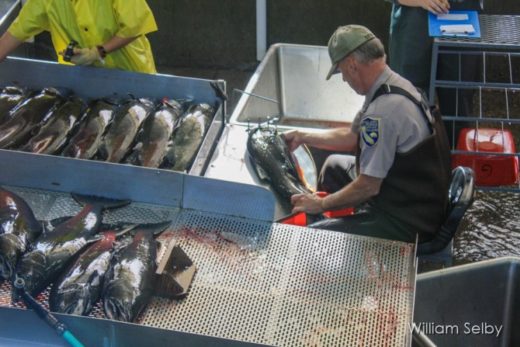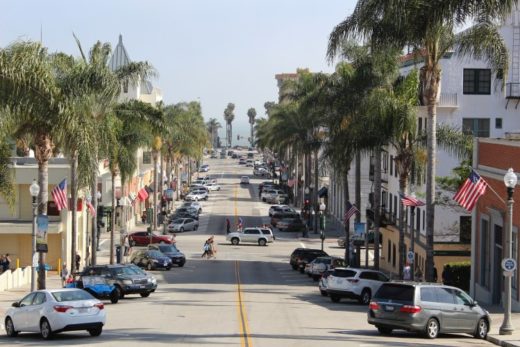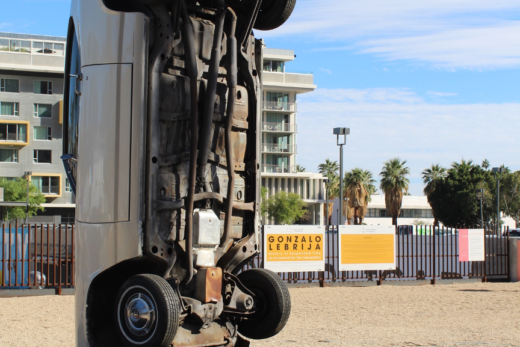Continue east on Pico toward downtown and Pico Union.
Stop # 7: Pico at Union (1287 Union Ave.):
By the late 1800s, Pico Union was a middle class extension from downtown L.A. and by the early 1900s, stately Victorian homes decorated what was an upscale landscape. You might notice their images that celebrate this past architectural trend now adding a little art traced on the sidewalks. By the mid-1900s, white flight and the car culture moved the wealth out to the suburbs and toward the West Side, stranding these neighborhoods in urban blight.

By 1970, much of this neighborhood was growing as a result of refugees escaping the violence resulting from political and economic turmoil that erupted in Central America during the Cold War. Corrupt regimes were forced to choose a side in the struggle between communism and the U.S., or “East versus West”. Central American authorities jailed, tortured, and killed political opponents and agitators with tactics that included throwing them out of helicopters. Pico Union neighborhoods grew with those seeking safety and opportunity as the violence and hopelessness escalated far to the south. In another classic example of the power of push and pull factors, poverty and corruption that followed the Cold War encouraged more chain migrations from there to here. More recent immigrants have fled violence and murder associated with drug cartels.

Community groups (including past Community Redevelopment Agencies from the late 1900s) have worked to stamp out crime, rehabilitate old buildings, increase housing options, and improve the quality of living and working environments here. They have confronted many bumps in that road, including the civil unrest of 1992 that was labelled a riot or uprising, depending on one’s perspective. As in many other L.A. neighborhoods, it is now feared that the latest beatification and improvement efforts will be so successful, they will encourage runaway gentrification that will attract a new class with disposable incomes, squeezing out working class families unable to afford higher rents and living costs. Nearly every L.A. neighborhood is debating how to find balance in such a turbulent, evolving city and economy as we look into the third decade of the 21st Century.

On this corner of Pico and Union, you can sample the wide range of dishes common to Nicaragua, El Salvador, Guatemala, and southern Mexico, including just about any kind of pupusa, depending on which side of the street you choose. Note the signage that says it all with “Tortilleria and Panaderia Restaurante/Comida Centro Americana and Mexicana” at what is called the “original La Adelita” (named after the female soldier icon of the Mexican Revolution). This eatery started in the 1970s as a little family bakery and grew into an enormous neighborhood landmark so popular you might have a very long wait if you get in line during busy hours. You will also find far more than just pupusa options across the intersection, including a colorful mural that has evolved throughout the years to reflect the art, culture, and struggles within this evolving neighborhood.













